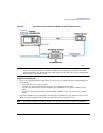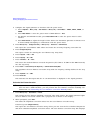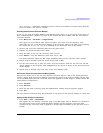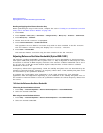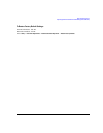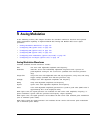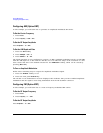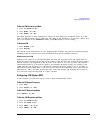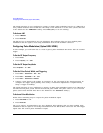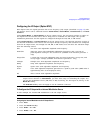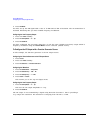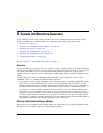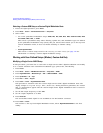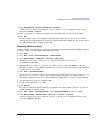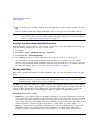
Chapter 5 139
Analog Modulation
Configuring ΦM (Option UNT)
To Set the FM Deviation and Rate
1. Press the FM/ΦM hardkey.
2. Press
FM Dev > 75 > kHz.
3. Press
FM Rate > 10 > kHz.
The signal generator is now configured to output a 0 dBm, frequency-modulated carrier at 1 GHz
with a 75 kHz deviation and a 10 kHz rate. The shape of the waveform is a sine wave. (Notice that
sine is the default for the
FM Waveform softkey. Press More (1 of 2) to see the softkey.)
To Activate FM
1. Press FM Off On to On.
2. Press
RF On/Off.
The FM and RF ON annunciators are now displayed. This indicates that you have enabled frequency
modulation and the signal is now being transmitted from the RF OUTPUT connector.
DC Offset and External FM
Applying a DC offset to an external FM signal will shift the frequency of the FM signal above or
below the carrier frequency, depending on the polarity of the DC level. The amount frequency shift is
directly related to the amplitude of the DC level. A DC offset of +1.0 volt or greater will shift the
external FM frequency by an amount equal to the maximum deviation setting. For example, if the
signal generator CW frequency is 1 GHz and the maximum deviation setting is set to 100 kHz, an
external DC-coupled signal with a +1.0 volt DC level used as the modulating source will center the
FM signal at 1 GHz + 100 kHz. Keeping the same setup and settings and changing the DC level to
+0.5 volts will center the FM signal at 1 GHz + 50 kHz.
Configuring ΦM (Option UNT)
In this example, you will learn how to create a phase-modulated RF carrier.
To Set the RF Output Frequency
1. Press Preset.
2. Press
Frequency > 3 > GHz.
To Set the RF Output Amplitude
Press Amplitude > 0 > dBm.
To Set the ΦM Deviation and Rate
1. Press the FM/ΦM hardkey.
2. Press the
FM ΦM softkey.
3. Press
ΦMDev > .25 > pi rad.
4. Press
ΦMRate > 10 > kHz.



